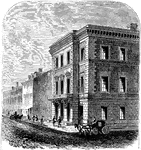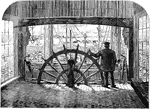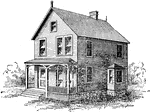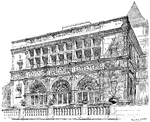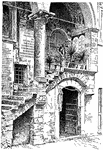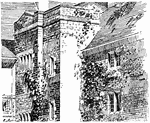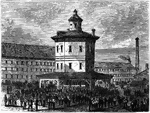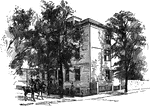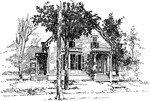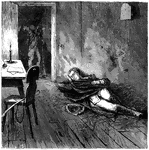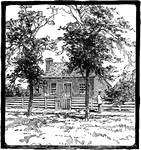
St. Aldhelm's Church, Bradford-on-Avon
Notable is the Saxon church (dedicated to St. Laurence), which may have been founded by St. Aldhelm…

The Tomb of Edward the Confessor
King Edward the Confessor (c. 1003 – 5 January 1066), son of Ethelred the Unready, was the penultimate…

Neilson House on Bemis's Heights
The mansion of Neilson, an active Whig at the time of the Battle of Bemis's Heights. It was the headquarters…
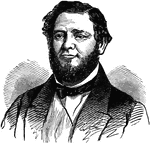
Judah Philip Benjamin
Judah Philip Benjamin (August 6, 1811 – May 6, 1884) was an American politician and lawyer. He was…

James Gillespie Blaine
James Gillespie Blaine was a U.S. Representative, Speaker of the United States House of Representatives,…
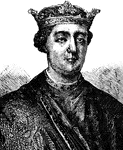
Henry II
Henry II of England (5 March 1133 – 6 July 1189) ruled as King of England (1154–1189). Henry…
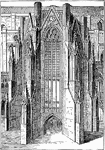
Chapter House of Old St. Paul's
Old St. Paul's is a name used to refer to the Gothic cathedral in the City of London built between 1087…

Chapter House, Westminster Abbey
The stone Abbey was built around 1045–1050 by King Edward the Confessor, who had selected the site…
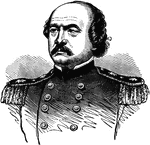
Benjamin Franklin Butler
Benjamin Franklin Butler (November 5, 1818 – January 11, 1893) was an American lawyer and politician…
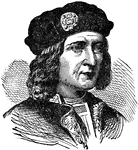
Richard III of England
Richard III (2 October 1452 - 22 August 1485) was King of England from 1483 until his death. He was…

Richard III of England
Richard III (2 October 1452 – 22 August 1485) was King of England from 1483 until his death. He…

Sir Thomas More's House, Chelsea
Sir Thomas More (7 February 1478 – 6 July 1535), from 1935 Saint Thomas More, was an English lawyer,…
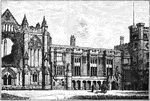
Newstead Abbey
Newstead Abbey, in Nottinghamshire, England, originally an Augustinian priory, is now best known as…

Fort Lafayette
Fort Lafayette was an island coastal fortification in New York Harbor, built next to Fort Hamilton.…
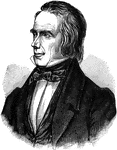
Henry Clay
Known as "The Great Compromiser" and "The Great Pacifier" for his ability to bring others to agreement,…

Howell Cobb
He was an American political figure. A Southern Democrat, Cobb was a five-term member of the United…
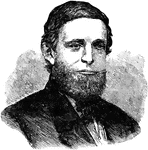
Schuyler Colfax
Schuyler (pronounced "Sky-ler") Colfax, Jr. (March 23, 1823 - January 13, 1885) was a U.S. Representative…
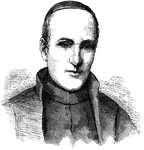
Peter Jan Beckx
Peter Jan Beckx (February 8, 1795, Sichem, Belgium - March 4, 1887, Rome, Italy) was a Belgian Jesuit,…

Leslie Combs
(1793-1881) — of Kentucky. Born in 1793. Served in the U.S. Army during the War of 1812; Speaker of…
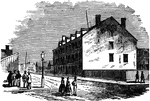
Castle Thunder
Castle Thunder, located in Richmond, Virginia, was a former tobacco warehouse located on Tobacco Row,…
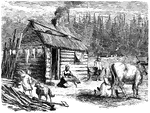
Log Cabin
An illustration of a family sitting outside of a log cabin. A child is gathering wood on the left bottom,…

Remote House
An illustration of a house located in a remote area. The illustration shows a man standing in front…

Roscoe Conkling
Roscoe Conkling (October 30, 1829 - April 18, 1888) was a politician from New York who served both as…
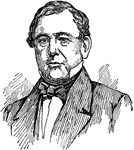
Thomas Corwin
Thomas Corwin, also known as Tom Corwin and The Wagon Boy was a politician from the state of Ohio who…
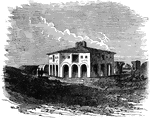
The Block-House in Craney Island, 1813
Craney Island is a point of land in the independent city of Portsmouth in the South Hampton Roads region…
Hampton Court, 17th Century
Hampton Court Palace is a former royal palace in the London Borough of Richmond upon Thames, south west…
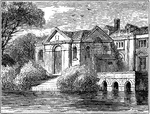
Gunpowder Conspirators' House, Lambeth
The Gunpowder Plot of 1605, or the Powder Treason, as it was known at the time, was a failed assassination…
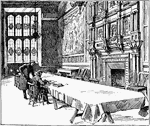
The Jerusalem Chamber
According to Holinshed, it was predicted that Henry IV would die in Jerusalem; Shakespeare's play repeats…
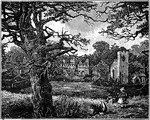
John Hampden's House, Buckinghamshire
Hampden House is a country house in the village of Great Hampden, between Great Missenden and Princes…
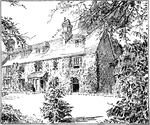
George Herbert's Rector House, Bemerton
George Herbert (April 3, 1593 – March 1, 1633) was a Welsh poet, orator and a priest. He went…

Garden House in Which Jefferson Celebrated the Passage of the Declaration
The garden house in which Jefferson and others celebrated the passage of the Declaration of Independence.
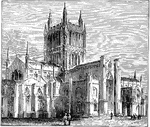
Hereford Cathedral
In the war between King and Parliament (the English Civil War) the city of Hereford fell into the hands…
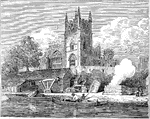
Church of All Saints, Wilden, Worcestershire
All Saints Church in Wilden, Worcestershire about one mile to the north east of Stourport. It was designed…

Elstow Church, Bedfordshire
Elstow Abbey was a monastery for Benedictine nuns in Bedfordshire, England. It was founded c.1075 by…

Greenway Court
Greenway Court was an estate of Thomas Fairfax, 6th Lord Fairfax of Cameron in Clarke County, Virginia,…
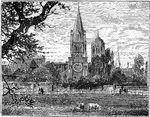
Oxford Cathedral
In 1522, the priory was surrendered to Cardinal Wolsey, having selected it as a site for his proposed…
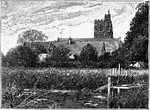
Bray Church, Near Maidenhead, Berks
The Church of England parish church of St Michael was built in 1293, supposedly to replace a Saxon church…
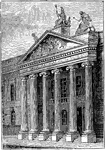
The Old East India House
East India House in Leadenhall Street in the City of London in England was the headquarters of the British…
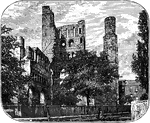
Ruins of Kelso Abbey
Kelso Abbey is a Scottish abbey built in the 12th century by a community of Tironensian monks who had…

Westover Plantation
Westover Plantation is located on the north bank of the James River in Charles City County, Virginia.…
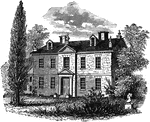
Chew's House
Benjamin Chew (November 19, 1722 – January 20, 1810) was a fifth-generation American, a Quaker-born…

Joshua Reed Giddings
Joshua Reed Giddings (October 6, 1795 - May 27, 1864) was an American statesman prominent in the anti-slavery…
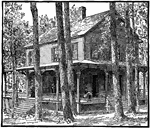
The House in which General Grant Died
The house in which General Ulysses S. Grant died in Mount McGregor, New York

The Battlefield of Guilford
The Battle of Guilford Court House was a battle fought on March 15, 1781 inside the present-day city…
